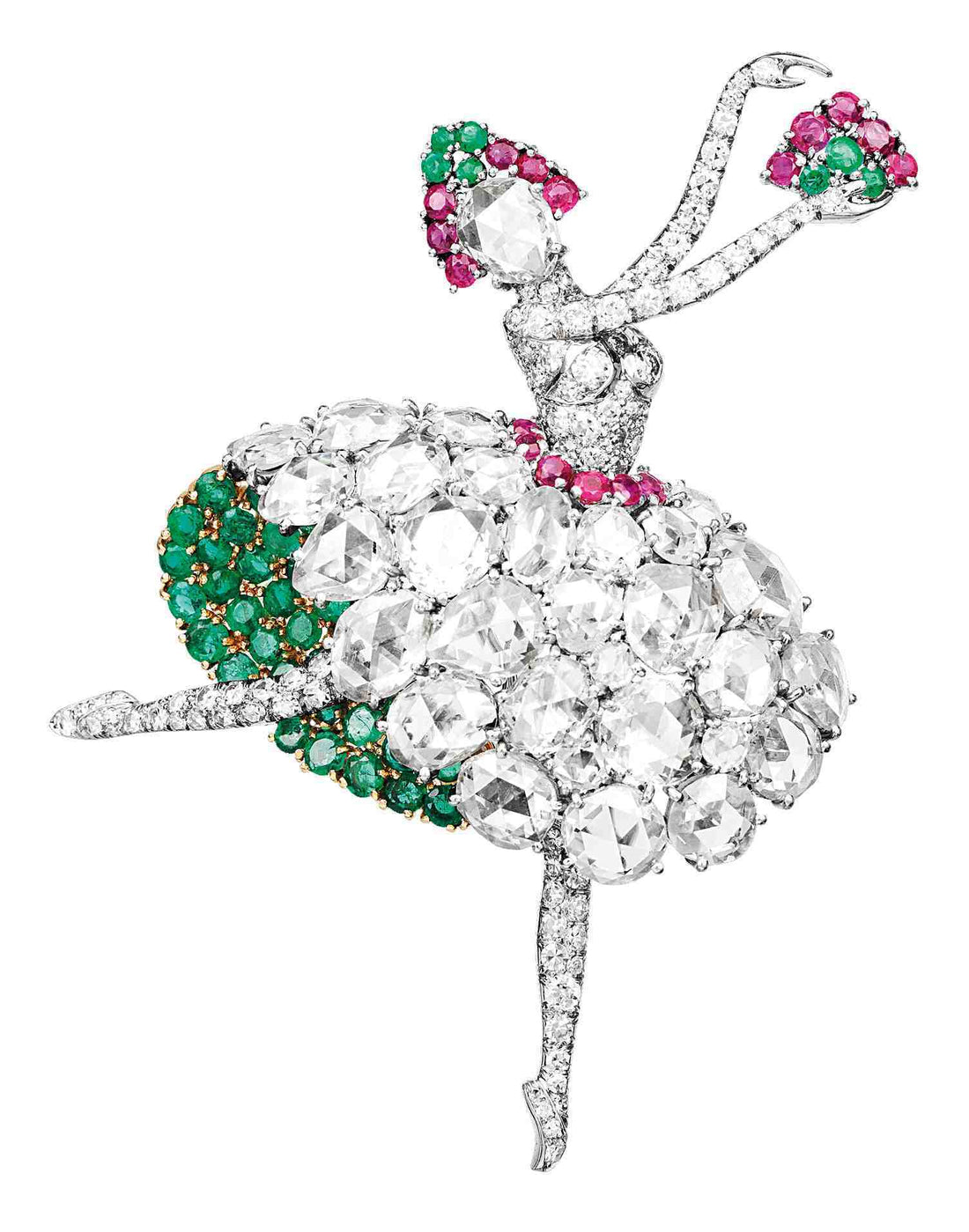Several links can be recognised between the gem & jewellery worlds and music. Perhaps the more obvious one is the iconic “Diamonds Are a Girl’s Best Friend” interpreted by Marilyn Monroe in Howard Hawks' musical “Gentlemen Prefer Blonds”, released in 1953. With a far more interesting substance, the 1960s witnessed the development of an idea of producing a ballet where jewellery, specially a selected group of gemstones, were the central theme of the piece. This happened by a fortunate chance when two outstanding figures met: Claude Arpels (1911-1990), nephew of the founder of the centenary French based early 20th century Van Cleef & Arpels, and Georges Balanchine (1904-1983), the famous St. Petersburgh born choreographer and co-founder of the New York City Ballet, held as a world reference on the contemporary dance scene. The occasional meet happened in New York City, where Balanchine had moved in 1933 and where Claude Arpels lived since 1939 to manage the 5th Avenue flagship store and his company's US market. They immediately connected at an intellectual and artistic levels and discovered that both shared a common passion: gemstones. From this ongoing close relationship a rather bold dance script was made where the costumes, that is to say the dancer's visuals, were jewels and, by coincidence or not, there were just like the early 1940s Van Cleef & Arpels ballerina clips (see above). The ballet "Jewels" started here.

The 1941 "Danceuse Espagnole" (The Spanish dancer) by Van Cleef & Arpels
George Balanchine was known for his superior musical background, having been a key figure in the advancement of abstract dancing where the relationship between music and movement played a more important role than scenography, performance stage design and costumes. His dance performance "Jewels" by the New York City Ballet that had its premier in April 1967 at the New York State Theater, has three acts, or movements, each one dedicated to a single gemstone and a selected composer: in the first act, the emeralds are danced to the sound of excerpts of the Pelléas et Méllisade and Shylock by Georges Fauré (1845-1924), the French composer known for his short but emblematic Requiem in D minor. In the second act, the Capriccio for Piano and Orchestra by Igor Stravinsky (1882-1971), one of Balanchine's favorites, offers motion to rubies and, finally, in the third act, diamonds with their brilliance and sparkle are choreographed around the Synphony nº 3, in C major by Pyotr Ilyich Tchaikovsky (1840-1893). Without any story line or plot, this ballet is an interesting challenge for the spectator as three completely different musical styles are interpreted in a peculiar way according to the sounds, where the movements are enriched by the visual differences in costumes and on-stage lights on the three distinct acts.

In the photo: Leta Biasucci and Jonathan Parreta, from Pacific Northwest Ballet, performing thr act "Rubies" with music by Stravinsky during the ballet Jewels by Balanchine © Angela Sterling
The acclaimed Ukranian born costume designer and 1948 Academy Award winner for best costume design in Victor Fleming's Joan of Arc, Barbara Karinska (1886-1983) had a key role in the first performance of "Jewels". Each costume dressed by every dancer in each act was meticulously designed, with green tulle skirts for emeralds, short red dresses for rubies and classical white tutu skirts for diamonds. According to Claude Arpels, these costumes sublimely represent the sparkle, colors and life of precious stones and jewellery, transforming the dancers into living jewels. This dance performance by Ballanchine became truly popular and was revisited allover the world by numerous dance companies.



